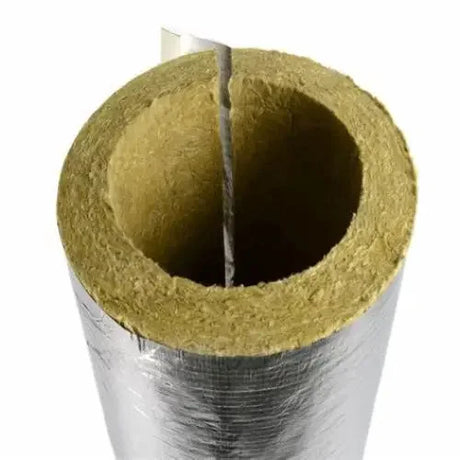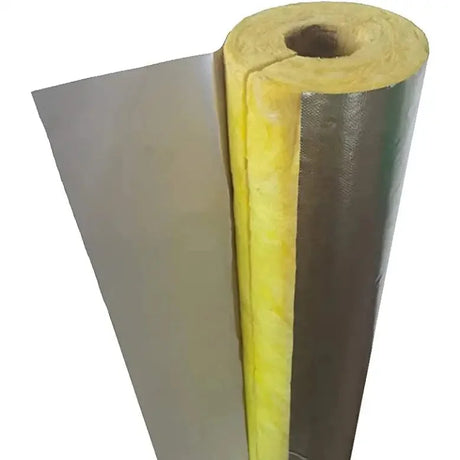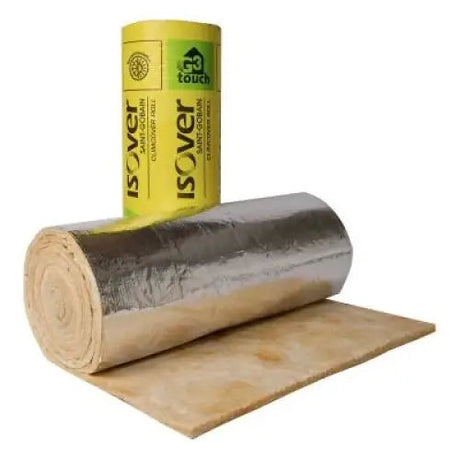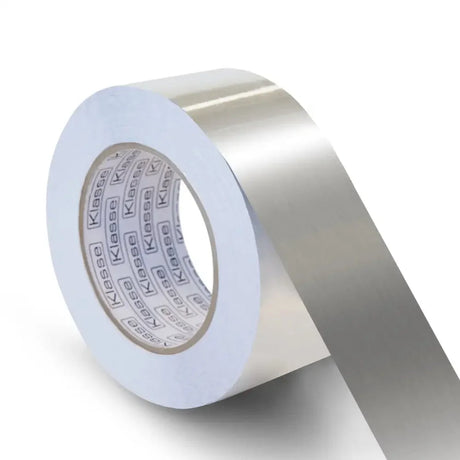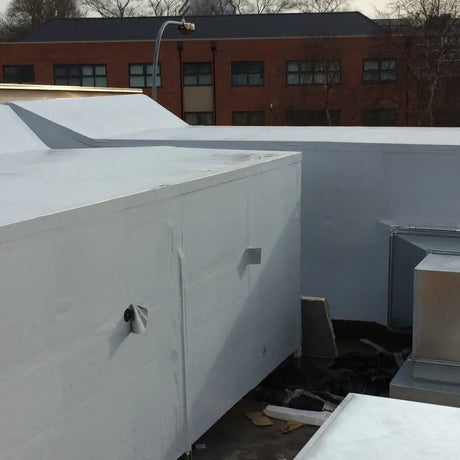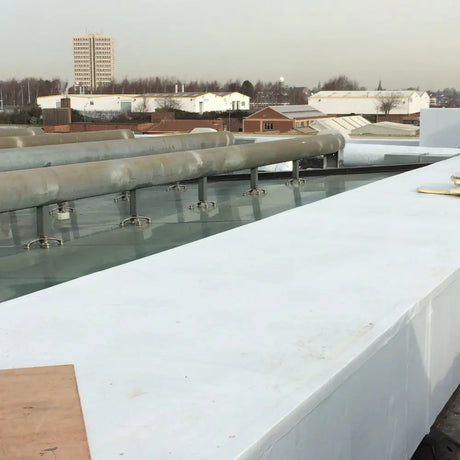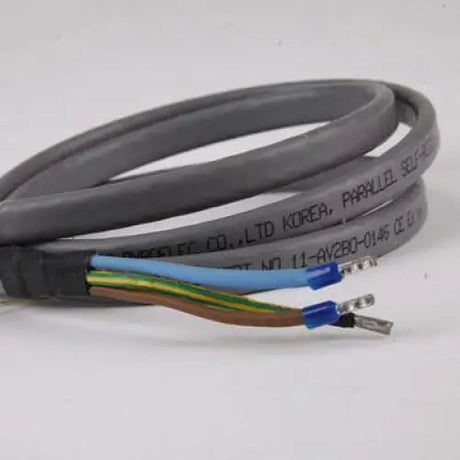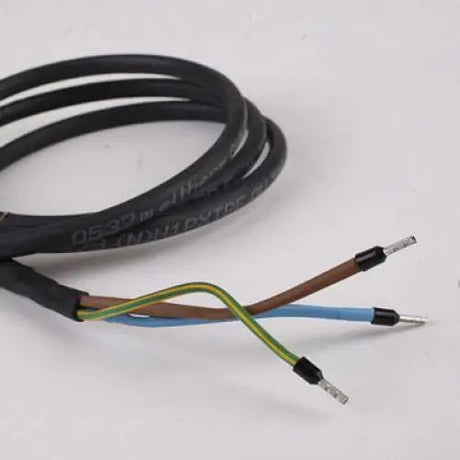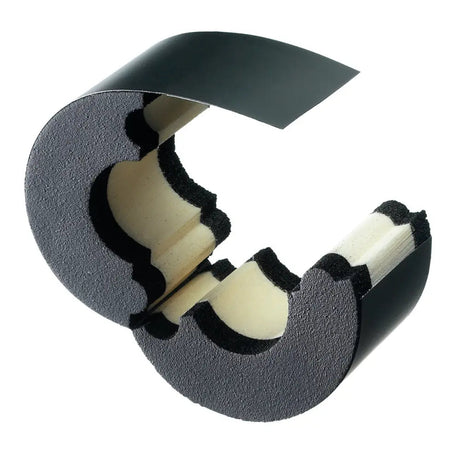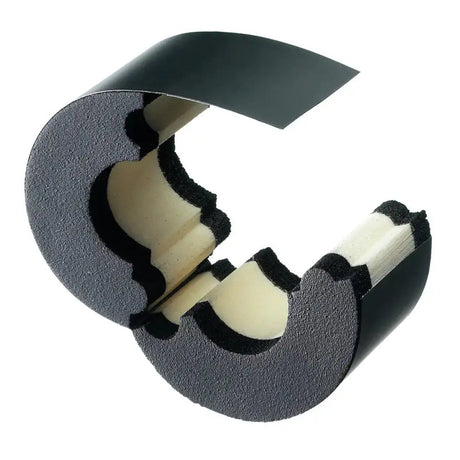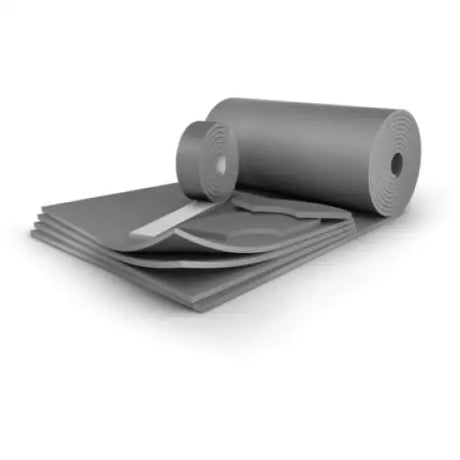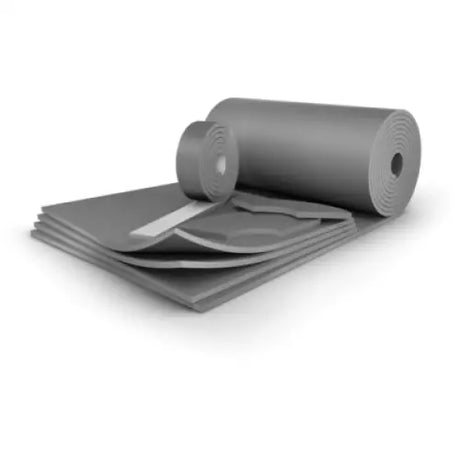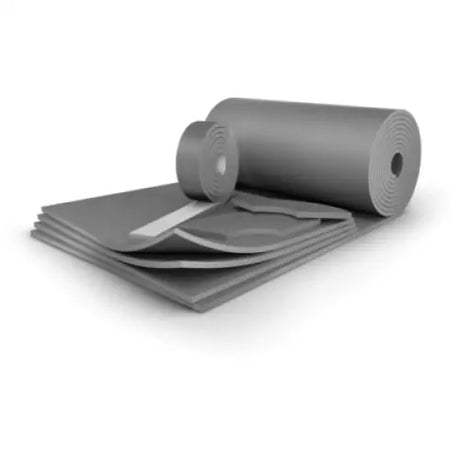Rockwool
Rockwool (Paroc) Foil Faced Pipe Insulation/Pipe Lagging (1m)
From £438Unit price /UnavailableIsover
Fiberglass Pipe Insulation / Lagging (Foil Covered) (1.2m)
From £605Unit price /UnavailableInsulation & More
VentureClad Duct Insulation Cladding (Vapor-fas) (25m2 Per Roll)
£21850Unit price /UnavailableInsulation & More
Self-Regulating Trace Heating Cable (10w/m Micro Cable)
From £911Unit price /UnavailableInsulation & More
Unbranded Mineral Wool Pipe Insulation/Lagging (Foil Covered)
From £504Unit price /Unavailable
What Is a Vapour Barrier?
A Vapour Barrier is a critical component in building construction designed to prevent moisture from migrating through walls, ceilings, and floors. Often a thin layer made from plastic or foil sheeting, vapour barriers are essential in controlling the flow of humid air to colder zones where it could condense into water, causing various structural problems. Additionally, these barriers contribute significantly to maintaining a building's thermal efficiency, as they help in keeping insulation dry and effective.
Why Are Vapour Barriers Important?
Vapour barriers are important for several reasons:
-
Moisture Control: By preventing the passage of water vapour through building assemblies, these barriers reduce the risk of condensation within walls, roofs, and floors.
-
Structural Integrity: Keeping moisture out helps in preserving the integrity of building materials, as prolonged exposure to dampness can lead to rot, mold, and other forms of decay.
-
Energy Efficiency: Dry insulation is far more effective than wet insulation. By keeping insulation dry, vapour barriers enhance the energy efficiency of a building, leading to lower heating and cooling costs.
How do Vapour Control Layers (VCL) Work
Vapour Control Layers (VCL) work by providing a resistance to the diffusion of water vapour. They are strategically placed on the warm side of the insulation in a building envelope to prevent the warm, moist air from reaching a dew point within the structure and condensing into liquid water. This is crucial because once condensation occurs, it can lead to a host of problems, including mold growth and structural damage. The effectiveness of a VCL is measured in terms of its permeability—the lower the permeability, the better it is at stopping moisture transfer.
Where are Moisture Barriers Installed?
Moisture barriers are commonly installed in various areas, depending on the climate and the specific requirements of the building. Key locations include:
- Basements and Crawlspaces: To prevent ground moisture from seeping into these areas.
- Walls: Especially in areas of high humidity, to stop moisture from infiltrating the wall cavity.
- Roofs and Attics: To prevent warm, moist air from condensing on the underside of the roof sheathing.
- Bathrooms and Kitchens: These are high humidity areas where vapour barriers help in preventing moisture from penetrating the walls and floors.
| Location | Purpose of Vapour Barrier |
|---|---|
| Basement | Protects against ground moisture. |
| Crawlspace | Prevents moisture from rising into the building structure. |
| Walls | Stops moisture from entering wall cavities. |
| Roofs and Attics | Averts condensation on cold surfaces in the roof structure. |
| Bathrooms/Kitchens | Protects against the high levels of humidity commonly found in these rooms. |
The Consequences of Bad Moisture Control
The consequences of inadequate moisture control can be severe, impacting not just the building itself but also the health of its occupants:
- Mold and Mildew Growth: These can lead to serious health issues, including respiratory problems and allergic reactions.
- Structural Damage: Wood rot and corrosion of metal components can compromise the structural integrity of the building.
- Reduced Insulation Performance: Wet insulation loses its ability to retain heat, leading to increased energy costs.
The significance of a well-installed Vapour Barrier cannot be overstated. Whether for new construction or in retrofitting older buildings, ensuring that a proper moisture control system is in place is essential for the long-term durability and habitability of the structure.
Types of Vapour Barriers
Different types of vapour barriers are employed based on the specific needs of the construction project and the environmental conditions of the area. These can be broadly categorized into permeable and impermeable membranes, each with its unique characteristics and applications.
Permeable Membranes
Permeable membranes, also known as breathable barriers, allow a certain amount of moisture to pass through while still providing a level of resistance to vapor diffusion. These types of barriers are often used in climates where buildings need to expel moisture during certain times of the year to avoid condensation issues. Permeable membranes are measured by their perm rating, which indicates the rate at which moisture can pass through the material.
| Membrane Type | Perm Rating | Typical Usage |
|---|---|---|
| Kraft Paper | varies | Often used in interior walls |
| Housewrap | Generally 5-60 perms | Common in exterior wall systems |
| Certain Coatings | Varies widely | Applied to drywall or other building materials |
Impermeable Membranes
Impermeable membranes are designed to provide a complete barrier to moisture vapor. These are often used in very cold climates where the interior humidity level must be carefully controlled to prevent any risk of condensation within the building envelope.
| Membrane Type | Perm Rating | Typical Usage |
|---|---|---|
| Polyethylene | Near 0 perms | Often used in basements and crawlspaces |
| Aluminum Foil | Near 0 perms | Common in attic insulation systems |
| Vapor Barrier Paint | Low perms | Applied on interior walls and ceilings |
Materials Used In Vapour Control Layers
The materials used in Vapour Control Layers (VCL) are diverse, each serving specific conditions and requirements. They include:
- Polyethylene Sheets: A common and cost-effective choice, polyethylene sheets are widely used for their impermeability.
- Aluminum Foil: Often used in radiant barrier applications, aluminum foil is highly impermeable and reflects heat as well.
- Bitumen Membranes: These are used on roofs and foundations for their waterproof and vapor-impermeable properties.
- Glass and Paper Fibre: Sometimes used in specialized applications, glass and paper fibre materials can serve as semi-permeable vapor retarders.
Benefits of Using Vapour Barriers
The benefits of using vapour barriers in construction are significant:
-
Preventing Mold and Deterioration: By controlling moisture, vapour barriers inhibit the growth of mold and prevent the deterioration of building materials.
-
Enhancing Comfort and Air Quality: These barriers contribute to a more consistent indoor climate and help maintain a higher standard of indoor air quality.
-
Energy Savings: They assist in optimizing the energy efficiency of HVAC systems by preserving the thermal envelope of buildings.
| Benefit | Description |
|---|---|
| Mold Prevention | Reduces the risk of mold, which can affect the health of occupants and the building's integrity. |
| Improved Air Quality | Helps to maintain cleaner indoor air by preventing the infiltration of humid, outside air. |
| Energy Efficiency | By keeping insulation dry, vapour barriers increase its effectiveness, leading to energy savings. |
| Structural Durability | Protects the integrity of the building materials by preventing moisture-induced deterioration. |
| Compliance with Building Codes | Meets the regulatory requirements for moisture control in construction. |
The implementation of vapour barriers is a strategic aspect of construction that involves careful consideration of material properties, climate conditions, and building design. The selection and installation of the correct type of barrier are instrumental in achieving the intended benefits and ensuring the long-term resilience of the structure.
How to Install Vapour Barriers
The installation of vapour barriers is a meticulous process that requires attention to detail to ensure effectiveness. When installing a vapour barrier, the goal is to create a continuous layer that prevents moisture from passing into the insulation and building materials.
-
Preparation: The first step involves preparing the surface, which should be clean and free from protrusions that could puncture the barrier.
-
Measure and Cut: Measure the area where the vapour barrier will be applied and cut the material to fit, leaving extra for overlaps at seams.
-
Seal Seams: Overlap the vapour barrier sheets by several inches at seams and use a sealant or vapour barrier tape to secure them. It is crucial to create an air-tight seal.
-
Attach to Structure: Use staples or special fasteners to attach the barrier to the framing, being careful not to create unnecessary holes.
-
Seal around Openings: Around openings such as windows, doors, and utility penetrations, extra care must be taken to seal the barrier to prevent moisture ingress.
The following table outlines key steps and considerations for a proper vapour barrier installation:
| Step | Consideration |
|---|---|
| Preparation | Ensure a clean, dry, and smooth surface to work on. |
| Measure and Cut | Accurately measure and cut the material, allowing for overlaps. |
| Seal Seams | Overlap and seal all seams with appropriate tapes or sealants. |
| Attach to Structure | Secure the barrier without creating extra holes or gaps. |
| Seal Openings | Properly seal around any openings to maintain continuity of the barrier. |
Maintaining Vapour Barriers
Maintaining vapour barriers is essential for their long-term performance:
- Regular Inspections: Periodically inspect the vapour barrier for tears, holes, or any other damage that could compromise its integrity.
- Repairs: If damage is found, it should be repaired immediately with the appropriate materials to prevent moisture intrusion.
- Avoid Punctures: When performing any work on the building, care should be taken to avoid puncturing or otherwise damaging the vapour barrier.
By proactively maintaining the vapour barrier, one can ensure that it continues to perform its crucial function of moisture control, thereby preserving the building's health and energy efficiency.
Tips for Choosing the Right Vapour Barrier
Choosing the right vapour barrier involves understanding the specific requirements of the building and the local climate. Here are some tips that can guide this selection:
- Know the Climate: Select a vapour barrier with the correct perm rating for the climate in which the building is located.
- Understand Building Use: Consider the building's usage and internal humidity levels when choosing a barrier.
- Consult Building Codes: Always refer to local building codes, as they can dictate the type of vapour barrier required for compliance.
- Quality Materials: Opt for high-quality materials that offer durability and longevity.
The following checklist can assist in ensuring the right choice of vapour barrier:
| Checklist Item | Description |
|---|---|
| Climate Consideration | Choose a vapor barrier appropriate for the climate zone. |
| Building Use Analysis | Select a barrier that matches the humidity levels generated within the building. |
| Building Code Compliance | Ensure that the chosen vapor barrier meets or exceeds local building code requirements. |
| Material Quality | Prioritize materials known for durability and effectiveness in moisture control. |
| Manufacturer's Recommendations | Follow the manufacturer's guidelines for the installation and use of their product. |
In the selection and installation process, it's important to engage with professionals who understand the nuances of vapour barrier applications. Their expertise can be invaluable in navigating the options and ensuring that the installation is performed correctly and efficiently. With proper maintenance and the right selection criteria, vapour barriers can provide long-term protection against moisture-related issues, thereby safeguarding the building's structural integrity and the comfort of its occupants.
Frequently Asked Questions
Below is a compilation of frequently asked questions regarding vapour barriers to help clarify common concerns and provide valuable information to those interested in this aspect of construction.
-
What is a vapour barrier? A vapour barrier is a material used in building construction that prevents moisture from passing through walls, ceilings, and floors, thereby protecting the building envelope from potential damage due to condensation.
-
Why is a vapour barrier important in construction? Vapour barriers are important because they prevent moisture from entering and damaging the building materials, which can lead to mold growth, reduced insulation effectiveness, and structural integrity issues.
-
Where should a vapour barrier be installed? Vapour barriers should be installed on the warm side of insulation in walls, attics, basements, crawlspaces, and in areas with high humidity such as bathrooms and kitchens.
-
What materials are commonly used for vapour barriers? Common materials for vapour barriers include polyethylene sheets, aluminum foil, bitumen membranes, and vapor barrier paints.
-
How does climate affect the choice of vapour barrier? Climate affects the permeability requirements of a vapour barrier; in colder climates, a less permeable barrier is typically used to prevent condensation within walls, while in mixed climates, a more permeable barrier might be preferable to allow walls to dry out.
-
Can a vapour barrier cause problems if not installed correctly? Yes, improper installation of a vapour barrier can lead to moisture entrapment, resulting in mold growth, rot, and a reduction in insulation performance.
-
Is a vapour barrier the same as an air barrier? No, a vapour barrier is not the same as an air barrier. A vapour barrier specifically controls moisture diffusion, while an air barrier is designed to prevent air leakage in and out of the building envelope.
-
How do you install a vapour barrier in a basement? In a basement, a vapour barrier is typically installed against the foundation wall before framing and insulating. It should overlap with the vapour barrier on the floor to ensure a continuous barrier.
-
What is a perm rating, and why does it matter? A perm rating measures the rate of water vapor transmission through a material, with lower numbers indicating less permeability. It matters because it helps you choose the right vapour barrier for your climate and building needs.
-
Are vapour barriers required by building codes? Many building codes do require vapour barriers or vapour retarders, depending on the climate zone and the specific construction details of the building.
-
Can a vapour barrier be used in retrofitting older buildings? Yes, vapour barriers can be used in retrofitting older buildings, but careful consideration must be given to the building's existing ventilation and moisture control systems to prevent trapping moisture.
-
How are repairs made to a damaged vapour barrier? Repairs to a damaged vapour barrier can be made by patching holes or tears with a matching material and sealing it with vapour barrier tape or sealant.
-
Do all parts of a building need a vapour barrier? Not all parts of a building may need a vapour barrier. The requirement depends on the climate, the construction of the building, and local building codes.
-
What's the difference between a vapour barrier and a moisture barrier? A vapour barrier specifically targets vapour diffusion, while a moisture barrier generally refers to materials that resist liquid water and may not provide the same level of vapour resistance.
-
How do vapour barriers contribute to energy efficiency? Vapour barriers contribute to energy efficiency by keeping insulation dry and effective, preventing heat loss, and reducing the workload on HVAC systems.
-
Can a vapour barrier be too thick or too thin? Yes, a vapour barrier can be too thick or too thin for its intended application. The thickness should be chosen based on the perm rating needed to control moisture diffusion effectively while still allowing for some drying potential.
-
What are the signs that a vapour barrier may be failing? Signs of a failing vapour barrier include peeling paint, warped wood, musty odors, and visible mold or mildew growth within the building.
-
How does a vapour barrier affect indoor air quality? A vapour barrier can improve indoor air quality by preventing the infiltration of humid air, which can carry pollutants and lead to mold growth.
-
Should a vapour barrier be used in all climate zones? While a vapour barrier is beneficial in most climate zones, the specific type and placement can vary. It's best to consult building codes and a construction professional for guidance.
-
Can insulation act as a vapour barrier? Some insulation materials have a built-in vapour barrier, such as faced fiberglass batts. However, additional vapour barriers may be necessary depending on the construction and climate.
-
What happens if a vapour barrier is installed on the wrong side of the insulation? Installing a vapour barrier on the wrong side of insulation can trap moisture within the wall assembly, leading to potential damage and mold growth.
-
Do vapour barriers need maintenance? Vapour barriers generally require little maintenance, but periodic inspections for damage and proper repairs can ensure their longevity.
-
Can I install a vapour barrier myself? Although it is possible to install a vapour barrier yourself, it is recommended to have it done by a professional to ensure correct installation and adherence to building codes.
-
What are the consequences of not using a vapour barrier? Not using a vapour barrier when it's necessary can lead to condensation inside walls, mold growth, structural damage, and decreased energy efficiency.
-
How long does a vapour barrier typically last? The lifespan of a vapour barrier depends on the material and environmental conditions but typically, a well-installed and maintained vapour barrier can last as long as the building itself.
-
How do I choose a contractor for vapour barrier installation? When choosing a contractor for vapour barrier installation, look for experience, references, knowledge of local building codes, and a clear understanding of the materials and techniques required for your specific project.
-
Can painting a wall act as a vapour barrier? Certain paints, known as vapor barrier paints, can act as a vapour barrier when applied correctly, but they generally do not replace traditional vapour barrier materials in terms of effectiveness.
-
What is the difference between a 6-mil and a 10-mil vapour barrier? The difference between a 6-mil and a 10-mil vapour barrier is the thickness of the material, with 10-mil being thicker and more resistant to punctures and tears compared to 6-mil.
-
Can a vapour barrier be used on the exterior of a building? Vapour barriers are typically used on the interior of a building; however, certain types of permeable barriers, such as house wraps, are designed for exterior use to help manage moisture.
-
Is there a situation where a vapour barrier should not be used? There are situations, particularly in very dry climates or certain types of construction, where a vapour barrier may not be necessary or could potentially trap moisture, and alternative moisture control methods would be more appropriate.

